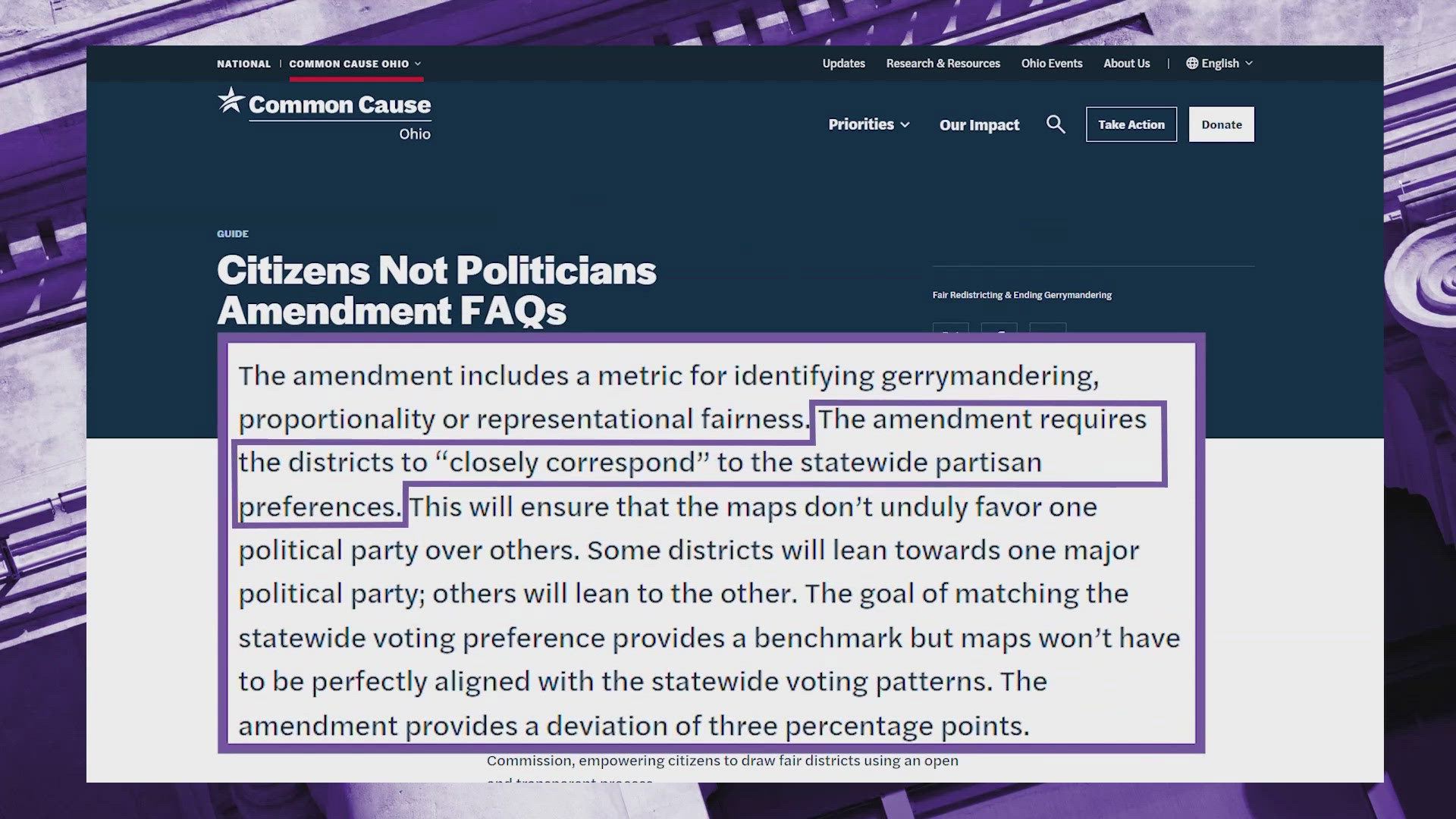CLEVELAND — When you cast your ballot in this year's election, you'll have a choice to make about the proposed redistricting amendment labeled as Issue 1.
WHAT IT MEANS TO VOTE 'YES' AND 'NO' ON ISSUE 1
Legally Speaking, a vote for Issue 1 is a vote to change how our voting districts are drawn in the state of Ohio by taking politicians out of the process.
A vote against Issue 1 is a vote to maintain the status quo, and allow politicians to continue to completely control what our voting districts look like.
ARGUMENTS FOR AND AGAINST ISSUE 1
Right now, our voting districts for Ohio's House and Senate and the U.S. House of Representatives are drawn by elected politicians. The people supporting Issue 1 want to change that.
They say our elected leaders shouldn't be in charge of choosing how the people they represent are grouped together, because it's led to politicians creating voting districts that help keep them in power.
People who oppose Issue 1 say that it's not a good solution to this problem because it would require voting districts to "closely correspond" to statewide party preferences, which is something that our current voting districts as drawn by our elected leaders do not do.
WHAT WILL HAPPEN IF ISSUE 1 PASSES
If it passes, Issue 1 will change Ohio's constitution to require voting districts to be created by citizens, not politicians. That group of 15 people would be called the Citizens Redistricting Commission. Any qualified Ohio voter would be able to apply to be part of this group.
A bipartisan panel of retired judges would then narrow down the applicants to 45 people, equally split among Republicans, Democrats, and independents. The final group of 15 people that would make up the Citizens Redistricting Commission would be chosen from there, again equally split among Republicans, Democrats, and independents.
Political party officials, current or former politicians, lobbyists, and their immediate family members would not be eligible to be on the commission.
If Issue 1 passes and citizens go on to draw new district maps, any Ohio voter will be able to challenge any of those maps by filing a case with the Ohio Supreme Court.
The first citizen-drawn maps would have to be in place by September 2025 so they could be used in the next year's midterm elections. The next new maps would be drawn in 2031 following the release of the latest census data, and subsequent new maps would be drawn every 10 years after that.

